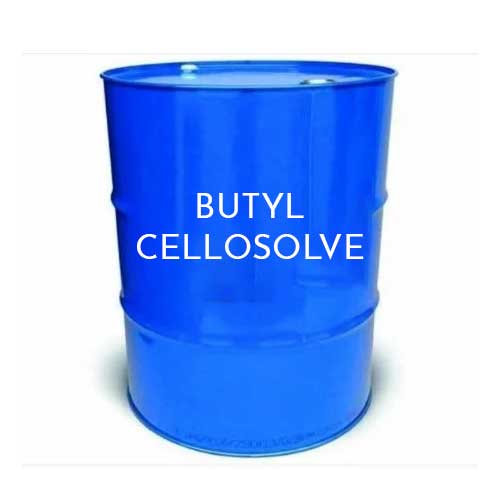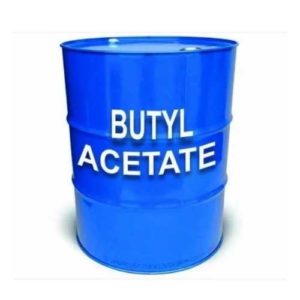BUTYL CELLOSOLVE (C6H14O2)
ABOUT:
Butyl cellosolve is also known as Ethylene Glycol Monobutyl Ether. Butyl cellosolve is produced through the process of ethoxylation. Ethoxylation is a chemical reaction where ethylene oxide is reacted with an alcohol to form an ethoxylate. In the case of butyl cellosolve, the alcohol used is butanol. The reaction is typically carried out in the presence of an alkaline catalyst, such as sodium hydroxide or potassium hydroxide, at elevated temperatures. The resulting product is then purified and distilled to obtain the final product, butyl cellosolve.
PHYSICAL PROPERTIES:
Appearance: Clear, colorless liquid
Odor: mild, ether-like odor
Molecular weight: 118.17 g/mol
Boiling Point: 198 °F (92.2 °C)
Melting Point: -80 °C
Vapor Pressure: 20 mmHg (25 °C)
Density: 0.9 g/cm³ (25 °C)
Flash Point: >100 °F (37.8 °C)
Auto-ignition temperature: 536 °F (280 °C)
CHEMICAL PROPERTIES:
- Is soluble in water
- It has low viscosity, which makes it useful as a solvent for a variety of substances in industrial applications, such as paint and coatings, cleaners, and adhesives.
- Butyl Cellosolve has a low toxicity profile and is generally considered safe to use, but as with all chemicals, prolonged exposure to high levels of the solvent can lead to adverse health effects, such as skin irritation, respiratory problems, and nervous system depression.
- It is toxic to aquatic life and can be harmful to the environment if not properly disposed of.
APPLICATIONS:
- Butyl Cellosolve is used as a solvent in the formulation of certain pesticides, herbicides, fungicidesto help distribute the active ingredients evenly.
- It is used as an adjuvant in agricultural sprays to improve the spread of the spray solution on the target plant surface.
- Butyl Cellosolve is used as a solvent in the formulation of all-purpose cleaners to dissolve and suspend soil, grease, and grime.
- It is used in the formulation of glass cleaners, hard surface cleaners, disinfectants as a solvent to dissolve grease and grime from glass surfaces.
- It acts as a thinner and degreaser, helping to adjust the viscosity and reduce surface tension, allowing for easier application and smoother, more even coverage.
- It is a versatile solvent that is used in various formulations, such as enamels, varnishes, and industrial coatings, to dissolve and disperse resins, pigments, and other ingredients.
- It is used to adjust the viscosity and flow properties of paint and coating formulations.
- It helps to dissolve resins used in the manufacture of printing inks and coatings, improving their properties such as adhesion, durability, and resistance to moisture and UV light.
- Butyl Cellosolve has low volatility, making it an effective thinner for solvent-based inks. This allows for easier printing and helps to reduce the formation of bubbles in the ink.
- Butyl Cellosolve helps to enhance the adhesion properties of adhesives, making them stronger and more durable.
SAFETY MEASURES:
- Wear appropriate personal protective equipment such as gloves, goggles, and a face mask to prevent skin and eye contact.
- Ensure that the work area is well-ventilated to reduce exposure to fumes.
- Keep Butyl Cellosolve away from heat sources and sparks, as it is flammable. Store it in a cool, dry place.
- In case of spillage, clean up immediately and avoid breathing in fumes.
- Store Butyl Cellosolve in a labeled, tightly sealed container, and keep it away from food and drink.
- Have an emergency response plan in place and know what to do in case of exposure or an accidental spill.
- In case of skin contact, wash immediately with soap and water.
- Butyl Cellosolve should be kept out of reach of children and pets to prevent accidental ingestion.





Reviews
There are no reviews yet.